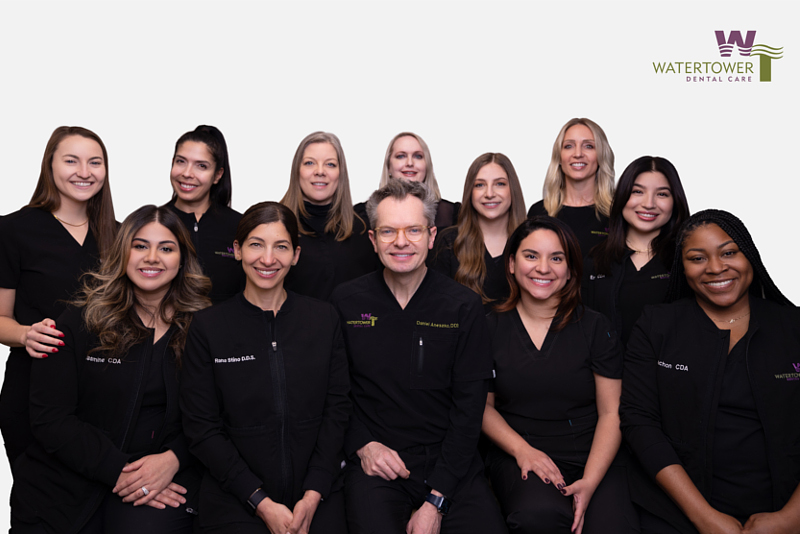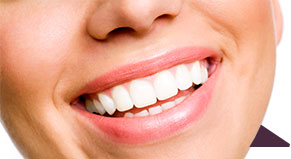Practices to Help Maintain Gums
July 14th, 2014
 One of the toughest issues when it comes to oral care is keeping your gums healthy. Throughout the years, you may have noticed that your gums can start to recede, moving farther down and revealing more of your teeth. This can be due to genetics or harmful bacteria and plaque that build up and weaken your gums. It can also be a form of gum disease that will result in sore gums, redness, and eventually bleeding.
One of the toughest issues when it comes to oral care is keeping your gums healthy. Throughout the years, you may have noticed that your gums can start to recede, moving farther down and revealing more of your teeth. This can be due to genetics or harmful bacteria and plaque that build up and weaken your gums. It can also be a form of gum disease that will result in sore gums, redness, and eventually bleeding.
To help save your gums and keep them healthy, here a few practices that Water Tower Dental recommends:
Brushing and Flossing regularly
Believe it or not, this is the easiest way to help maintain gums. Try brushing after every meal and flossing once a day to help keep your mouth clear of plaque and unwanted food. But also realize that you can brush and floss too much. Your mouth needs time to balance its own natural chemistry, so keep to a good schedule and don’t overdo it. Flossing is not necessary more than once a day. And don’t think you need to brush after every time you eat food. It’s good to brush after larger meals, but small snacks throughout the day can be washed away with a glass of water and your body’s natural saliva distribution.
Use Mouthwash
Along with brushing and flossing, using a strong mouthwash once a day can also help kill unwanted bacteria and keep your mouth feeling fresh. Mouthwash is great for stopping plaque growth in areas where the toothbrush or even floss can’t reach.
Eat Probiotics
We reported before on how probiotics can help your teeth. Eating them a few times a month can actually help maintain your gums too. Probiotics are a collection of good bacteria. When you eat them, you replace areas where bad bacteria can live with bacteria that helps your mouth. Eating probiotics a few times a month will help keep your mouth’s chemistry regulated and healthy.
Keep Juices, Coffee, and Acidic Drinks to Meal Time
When trying to keep your gums at a strong level, you need to avoid some of the more harmful substances to your teeth. Acidic drinks, such as high-sugar juices, soda, and coffee, can ultimately do bad damage to your teeth and gums. However, they are most harmful when they’re consumed alone. This is the best time for the acidic elements to move around your mouth. During a mealtime though, much of your food can soak up the acidic juice and keep it from causing too much harm. Also, when you eat, your mouth naturally salivates, which helps wash away food bits and the juice
Take Vitamin C and D
Both vitamins are great for oral health. Vitamin C contains antioxidants that help replace connective tissues and accelerate bone regeneration. Vitamin D has been known to have anti-inflammatory effects and can help reduce your gums’ chance of developing periodontal disease.
Visit Your Dentist Regularly
And last, a terrific way to help keep your teeth clean and maintain your gums is by consulting and working with your dentist to find practices that will work for you. Also, an oral cleaning from the dentist is an amazing way to start a strong regiment against gum decay and periodontal disease.
If you’re having trouble with receding gums or suspect you have periodontal disease, do not hesitate to call Water Tower Dental. We can help you find the right track to a healthier lifestyle that will repair your gums and make your smile shine. For more questions, contact Water Tower Dental today.


 Invisalign is one of the best dental advancements in the recent decades. By using a silicone-based mold to shape a person’s teeth, the use of traditional metal braces is no longer needed. This helps reduce unsightly and embarrassing moments with wire braces along with painful side effects. The aspects of Invisalign are quite simple, and with just a few visits to your dentist, you can start the process to a straighter smile.
Invisalign is one of the best dental advancements in the recent decades. By using a silicone-based mold to shape a person’s teeth, the use of traditional metal braces is no longer needed. This helps reduce unsightly and embarrassing moments with wire braces along with painful side effects. The aspects of Invisalign are quite simple, and with just a few visits to your dentist, you can start the process to a straighter smile. Invisalign aligners are replaced every two weeks for approximately six months to a year. The aligners are recommended to be worn for 20 to 22 hours a day and should only be removed for eating meals and when drinking any liquid that is not water.
Invisalign aligners are replaced every two weeks for approximately six months to a year. The aligners are recommended to be worn for 20 to 22 hours a day and should only be removed for eating meals and when drinking any liquid that is not water. Losing a tooth either by accident or through declining oral health can be a tough experience. It can affect your confidence and well-being along with your oral health. Dental implants are a great way to keep your smile looking great and prevent further damage to your mouth. Of course, dental implants aren’t as simple as one would hope and there are several aspects to receiving an implant. However, if you practice good oral hygiene and are in the hands of an experienced dentist, you should have no problem rebuilding an excellent smile.
Losing a tooth either by accident or through declining oral health can be a tough experience. It can affect your confidence and well-being along with your oral health. Dental implants are a great way to keep your smile looking great and prevent further damage to your mouth. Of course, dental implants aren’t as simple as one would hope and there are several aspects to receiving an implant. However, if you practice good oral hygiene and are in the hands of an experienced dentist, you should have no problem rebuilding an excellent smile. It can take two weeks to a month for your jawbone to osseointegrate properly with the anchor. During that time, most patients are given a denture or temporary bridge to replace the missing tooth. Once the anchor is ready, the dentist will add a small connector to the anchor known as an abutment. The abutment connects the anchor to the replacement tooth
It can take two weeks to a month for your jawbone to osseointegrate properly with the anchor. During that time, most patients are given a denture or temporary bridge to replace the missing tooth. Once the anchor is ready, the dentist will add a small connector to the anchor known as an abutment. The abutment connects the anchor to the replacement tooth




 Website Powered by Sesame 24-7™
Website Powered by Sesame 24-7™